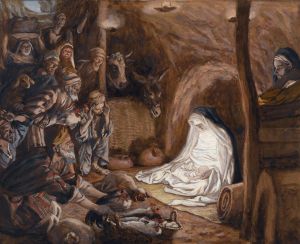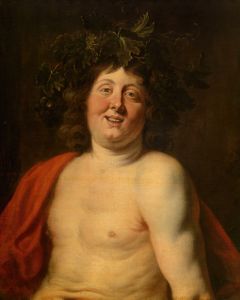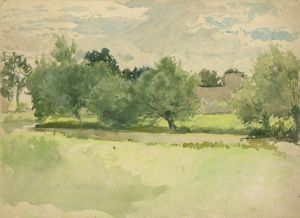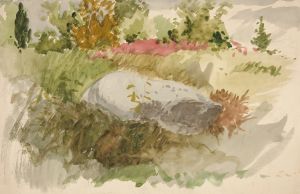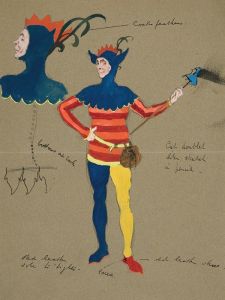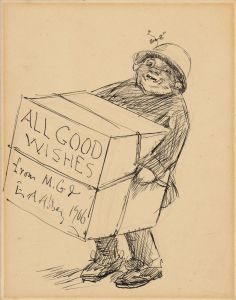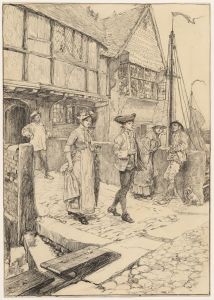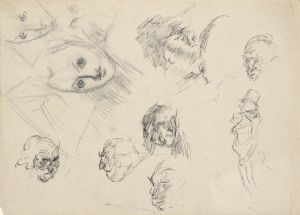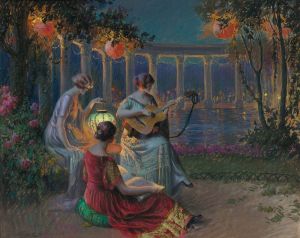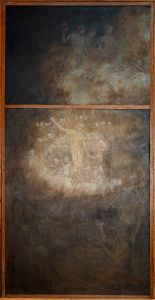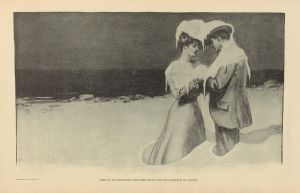
Dickens, Christmas Stories. ‘You bad boy!’ said Mr. Teterby.
A hand-painted replica of Edwin Austin Abbey’s masterpiece Dickens, Christmas Stories. ‘You bad boy!’ said Mr. Teterby., meticulously crafted by professional artists to capture the true essence of the original. Each piece is created with museum-quality canvas and rare mineral pigments, carefully painted by experienced artists with delicate brushstrokes and rich, layered colors to perfectly recreate the texture of the original artwork. Unlike machine-printed reproductions, this hand-painted version brings the painting to life, infused with the artist’s emotions and skill in every stroke. Whether for personal collection or home decoration, it instantly elevates the artistic atmosphere of any space.
Edwin Austin Abbey was an American artist known for his illustrations and paintings, particularly those depicting scenes from literature and history. One of his notable works is the illustration titled "‘You bad boy!’ said Mr. Teterby," which is part of a series of illustrations Abbey created for Charles Dickens' "Christmas Stories." Abbey's work in this series captures the essence of Dickens' storytelling, bringing to life the vivid characters and settings that Dickens so masterfully described in his writings.
Abbey was born in 1852 in Philadelphia, Pennsylvania, and he began his artistic career as an illustrator for magazines. He moved to England in 1878, where he became associated with the Pre-Raphaelite Brotherhood and gained recognition for his detailed and expressive illustrations. Abbey's work was characterized by its historical accuracy, attention to detail, and ability to convey the emotional depth of the scenes he depicted.
The illustration "‘You bad boy!’ said Mr. Teterby" reflects Abbey's skill in capturing the nuances of Dickens' characters. Dickens' "Christmas Stories" were a series of tales published during the 19th century, which often explored themes of redemption, compassion, and the spirit of Christmas. Abbey's illustrations for these stories were published in various editions and helped to popularize Dickens' works, making them accessible to a wider audience through visual representation.
Abbey's collaboration with Dickens' texts was part of a broader trend during the Victorian era, where literature and visual art were closely intertwined. Illustrations played a significant role in how stories were consumed and understood by the public. Abbey's work contributed to this tradition by providing a visual narrative that complemented Dickens' prose, enhancing the reader's experience and understanding of the story.
The specific illustration of Mr. Teterby captures a moment of interaction between characters, showcasing Abbey's ability to depict human expressions and interactions with clarity and empathy. Abbey's use of line, shading, and composition draws the viewer into the scene, allowing them to engage with the narrative on a deeper level.
Throughout his career, Abbey continued to work on various projects, including murals and paintings, but his illustrations for literary works remain some of his most celebrated contributions to the art world. Abbey's legacy as an illustrator is marked by his ability to bring literature to life, creating images that resonate with the themes and emotions of the stories they accompany.
In summary, Edwin Austin Abbey's illustration "‘You bad boy!’ said Mr. Teterby" is a testament to his skill as an artist and his ability to interpret and enhance literary works through visual art. His contributions to the illustration of Dickens' "Christmas Stories" highlight the important role of visual art in the dissemination and appreciation of literature during the Victorian era. Abbey's work continues to be appreciated for its historical significance and artistic merit.





